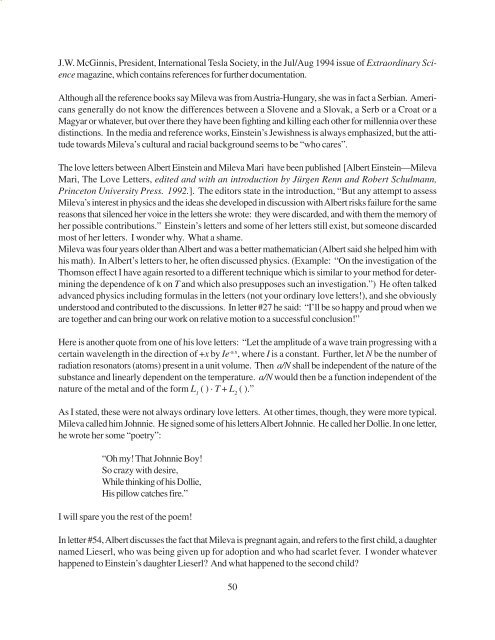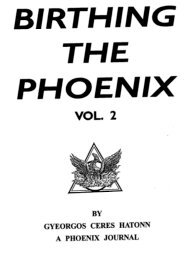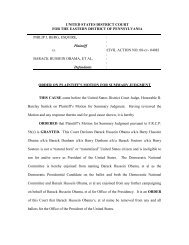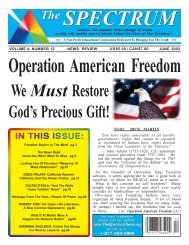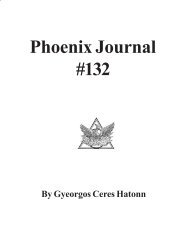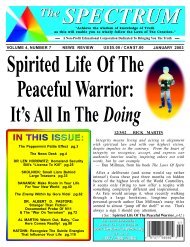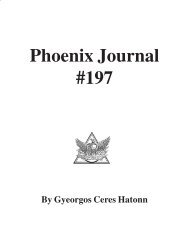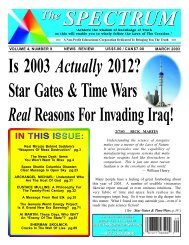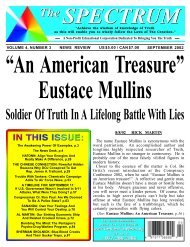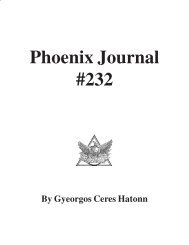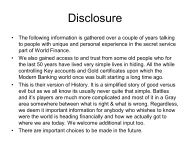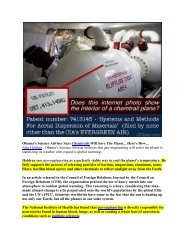Phoenix Journal 208 - Four Winds 10
Phoenix Journal 208 - Four Winds 10
Phoenix Journal 208 - Four Winds 10
You also want an ePaper? Increase the reach of your titles
YUMPU automatically turns print PDFs into web optimized ePapers that Google loves.
J.W. McGinnis, President, International Tesla Society, in the Jul/Aug 1994 issue of Extraordinary Science<br />
magazine, which contains references for further documentation.<br />
Although all the reference books say Mileva was from Austria-Hungary, she was in fact a Serbian. Americans<br />
generally do not know the differences between a Slovene and a Slovak, a Serb or a Croat or a<br />
Magyar or whatever, but over there they have been fighting and killing each other for millennia over these<br />
distinctions. In the media and reference works, Einstein’s Jewishness is always emphasized, but the attitude<br />
towards Mileva’s cultural and racial background seems to be “who cares”.<br />
The love letters between Albert Einstein and Mileva Mari have been published [Albert Einstein—Mileva<br />
Mari, The Love Letters, edited and with an introduction by Jürgen Renn and Robert Schulmann,<br />
Princeton University Press. 1992.]. The editors state in the introduction, “But any attempt to assess<br />
Mileva’s interest in physics and the ideas she developed in discussion with Albert risks failure for the same<br />
reasons that silenced her voice in the letters she wrote: they were discarded, and with them the memory of<br />
her possible contributions.” Einstein’s letters and some of her letters still exist, but someone discarded<br />
most of her letters. I wonder why. What a shame.<br />
Mileva was four years older than Albert and was a better mathematician (Albert said she helped him with<br />
his math). In Albert’s letters to her, he often discussed physics. (Example: “On the investigation of the<br />
Thomson effect I have again resorted to a different technique which is similar to your method for determining<br />
the dependence of k on T and which also presupposes such an investigation.”) He often talked<br />
advanced physics including formulas in the letters (not your ordinary love letters!), and she obviously<br />
understood and contributed to the discussions. In letter #27 he said: “I’ll be so happy and proud when we<br />
are together and can bring our work on relative motion to a successful conclusion!”<br />
Here is another quote from one of his love letters: “Let the amplitude of a wave train progressing with a<br />
certain wavelength in the direction of +x by Ie -a x , where I is a constant. Further, let N be the number of<br />
radiation resonators (atoms) present in a unit volume. Then a/N shall be independent of the nature of the<br />
substance and linearly dependent on the temperature. a/N would then be a function independent of the<br />
nature of the metal and of the form L 1 ( ) · T + L 2 ( ).”<br />
As I stated, these were not always ordinary love letters. At other times, though, they were more typical.<br />
Mileva called him Johnnie. He signed some of his letters Albert Johnnie. He called her Dollie. In one letter,<br />
he wrote her some “poetry”:<br />
“Oh my! That Johnnie Boy!<br />
So crazy with desire,<br />
While thinking of his Dollie,<br />
His pillow catches fire.”<br />
I will spare you the rest of the poem!<br />
In letter #54, Albert discusses the fact that Mileva is pregnant again, and refers to the first child, a daughter<br />
named Lieserl, who was being given up for adoption and who had scarlet fever. I wonder whatever<br />
happened to Einstein’s daughter Lieserl? And what happened to the second child?<br />
50


